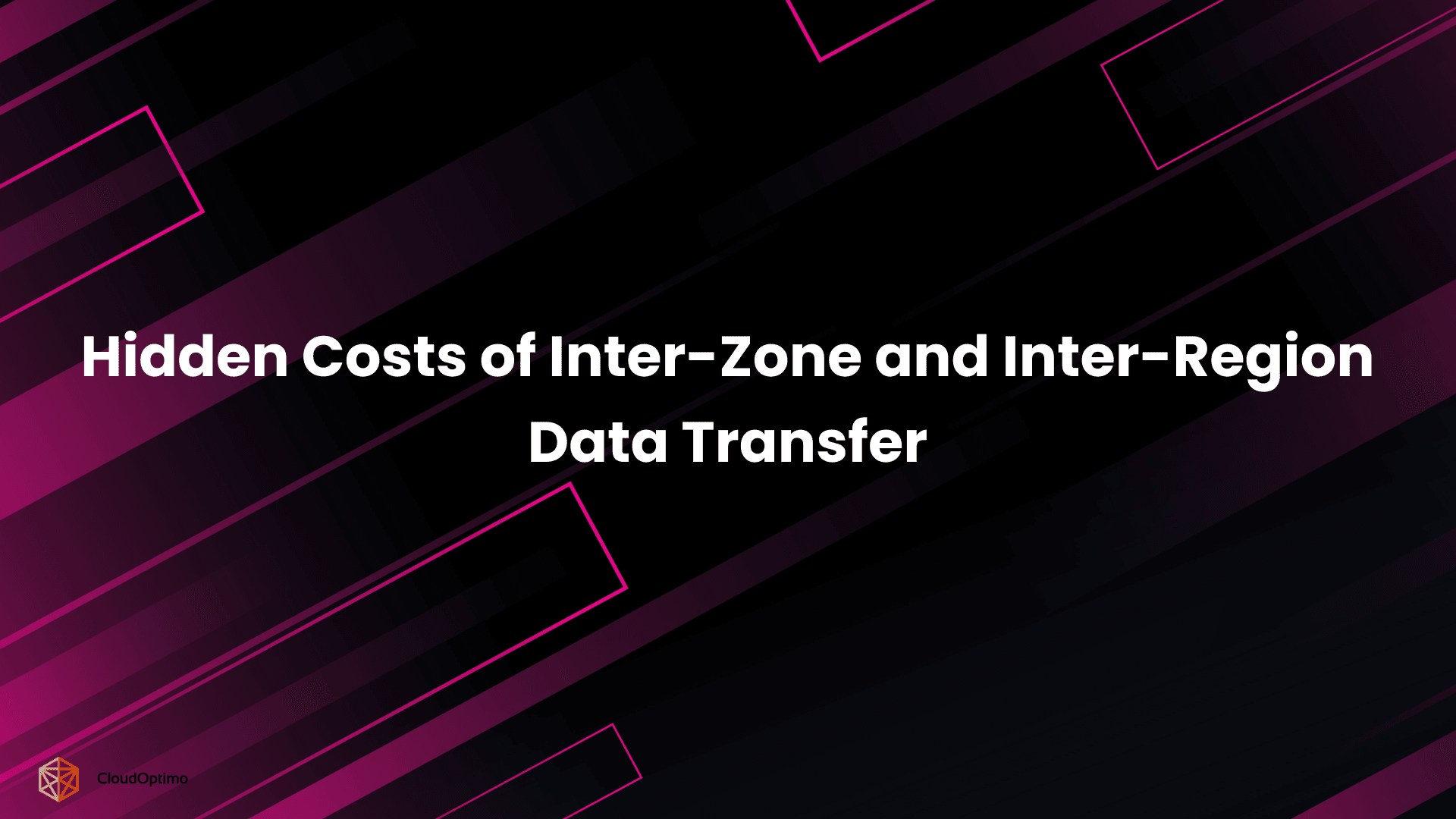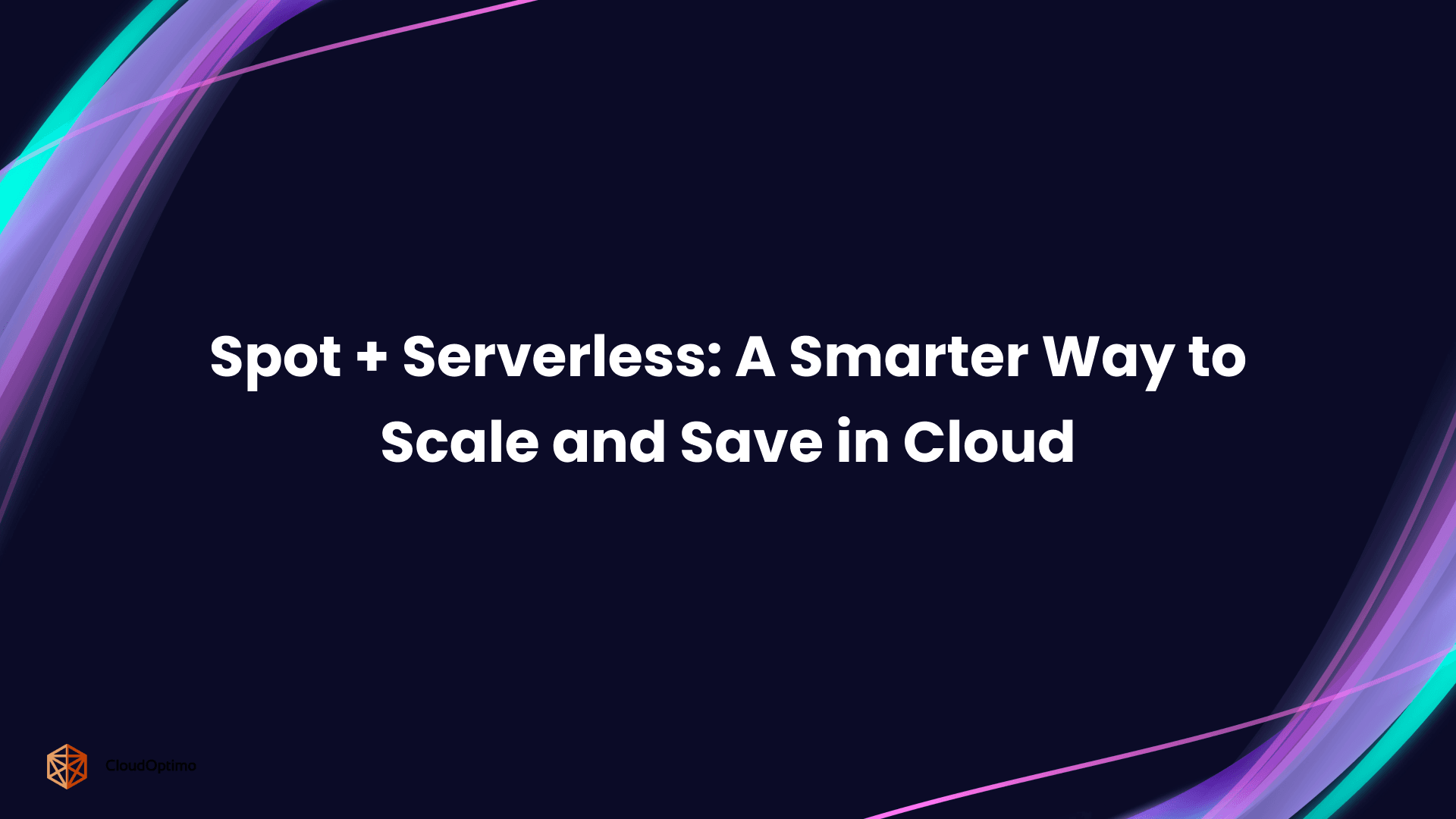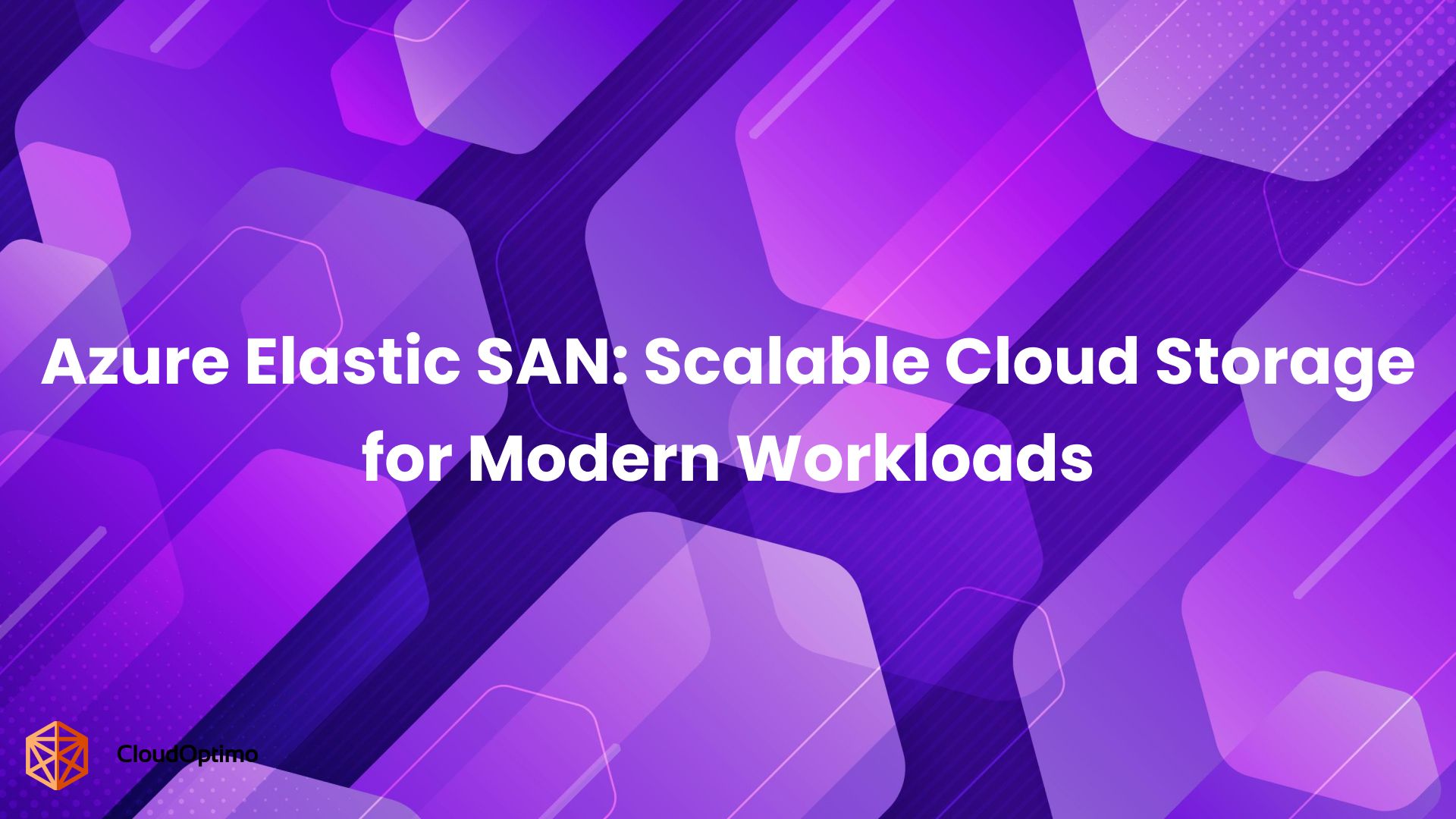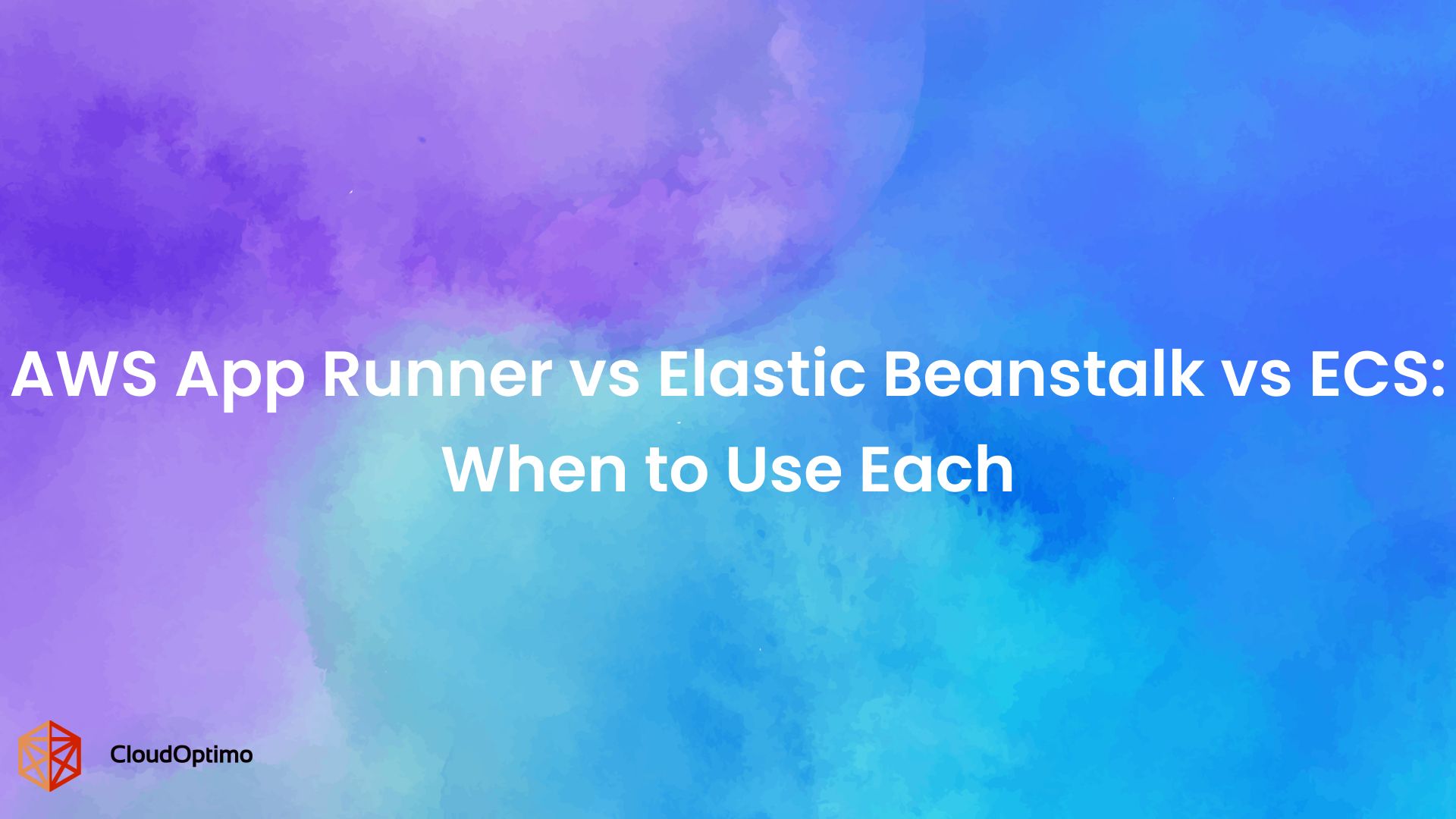The Evolution of Lambda Usage from Prototype to Production
Lambda has evolved significantly beyond its initial role as a tool for rapid prototyping or lightweight automation. What began as a tool for lightweight automation and prototyping is now widely used in production environments to support APIs, event-driven workflows, and background processing at scale. This shift has introduced a critical requirement: managing cost as part of day-to-day engineering decisions.
In early development stages, Lambda's cost was often minimal and predictable. However, as applications grow and usage increases, cost behavior becomes more complex. High volumes of invocations, longer execution durations, and architectural choices that were acceptable at a small scale can result in significant and often unexpected costs in production.
By 2025, teams are expected to plan for and evaluate the financial impact of technical decisions throughout the development cycle. This has led to the growth of Serverless FinOps – an approach that emphasizes cost visibility, accountability, and control across engineering and finance teams.
Without clear cost practices, organizations face challenges in scaling serverless systems efficiently. Decisions around memory allocation, retries, parallelism, and concurrency have a direct effect on cost, and without careful planning, these can lead to long-term inefficiencies.
The next section will examine how AWS Lambda pricing works in large-scale environments and why the cost model, while simple in theory, often leads to complex outcomes in practice.
Understanding How AWS Lambda Pricing Works at Scale
Deploying AWS Lambda at scale requires more than knowing the pricing model; it requires understanding how technical choices affect cost in production. While the pricing structure is easy to describe, its impact grows more complex as workloads increase.
Pricing Components: Duration, Memory, and Invocations
Lambda costs are based on three primary components:
- Invocations – Billed per execution, regardless of input or result.
- Duration – Measured from function start to termination, rounded to the nearest millisecond.
- Memory Allocation – Chosen at deployment time (128MB to 10GB), and directly influences CPU and networking resources.
Each of these dimensions scales linearly. However, the relationship between them often results in non-obvious cost patterns. For instance, increasing memory can reduce duration by improving compute throughput, but only if the workload is compute-bound. For I/O-bound workloads, higher memory can increase cost without a performance gain.
At a small scale, inefficiencies in any of these dimensions have limited financial impact. But in production, where functions may run millions or billions of times per month, even minor misalignments compound quickly into substantial and recurring costs.
Hidden Cost Drivers: Cold Starts, Retries, and Parallelism
Some behaviors do not appear directly on a billing report, but still increase Lambda costs in large systems:
- Cold Starts – Each cold start requires environment initialization. While fast in some runtimes, repeated cold starts under burst traffic or low-invocation frequency can add significant time to duration billing.
- Retries – Event sources like SQS, SNS, and EventBridge automatically retry on failure. Without idempotent design and timeout control, a single failure can lead to multiple full-priced invocations.
- Parallelism – High concurrent execution increases cost exposure. Spikes in traffic that trigger thousands of parallel functions can result in higher billed durations and increased I/O contention, often without real throughput gain.
These factors often appear during production traffic patterns, especially in systems with bursts of activity, failures, or real-time processing.
When Linear Pricing Becomes Nonlinear: A Behavioral View
Although Lambda has a simple per-invocation pricing model, real-world costs often do not grow in a straight line. This is because actual cost is influenced by how functions behave, not just how often they run.
Common behaviors that make costs rise faster than expected include:
- Over-allocating memory – Increasing memory without a clear performance gain increases cost with no benefit.
- Idle wait time – Functions waiting for slow APIs or databases still count toward billed duration.
- Repeated failures – One failure that triggers retries may multiply costs unnecessarily.
At scale, these issues can shift Lambda from a cost-effective option to a significant budget risk. Monitoring how functions behave in production—and optimizing early—helps avoid these problems.
Common Cost Pitfalls in Large-Scale Lambda Deployments
In small environments, minor inefficiencies in Lambda usage are often overlooked. At scale, these same choices result in a persistent and measurable cost impact. This section outlines common engineering decisions that drive up cost—often silently—and how they affect real deployments.
- Over-Allocating Memory Without Performance Gains
Many teams increase memory to "fix" performance without measuring whether the function is compute-bound or waiting on I/O. This leads to higher charges with no real benefit.
For example, a function waiting 400ms on a third-party API will still wait the same amount of time, even with 2GB of memory. Yet, the billed cost doubles compared to the same function running at 1GB.
In high-volume environments, these marginal increases multiply. Profiling memory usage and benchmarking with realistic inputs should be part of every production readiness review. Tools like Lambda Power Tuning can show optimal memory settings based on real execution patterns, not assumptions.
- Function Granularity and Duplication Across Microservices
Splitting logic across many small functions increases maintainability in theory, but can lead to higher operational costs. In practice, this often causes:
- Repeated dependency packaging across multiple Lambdas
- More cold starts due to lower per-function invocation frequency
- Shared utility logic copied across services instead of being reused
For example, if five functions across services each include a 20MB dependency that runs infrequently, each can suffer from cold start latency and longer init time. Instead, shared logic should be centralized using layers or monorepos with build-time pruning. Review service boundaries for redundancy, and aim to reduce unnecessary fragmentation when it introduces runtime cost.
- Inefficient Retry Mechanisms in Event-Driven Architectures
Unbounded retries are a hidden cost driver, especially in event sources like SQS, Kinesis, or DynamoDB Streams. A function that fails under load may reprocess the same message multiple times unless explicitly handled.
At scale, this causes:
- Elevated invocation counts from the same root event
- Duplicate downstream writes or processing
- Increased cold starts if the retry volume exceeds concurrency limits
Engineering teams should implement retry caps, dead-letter queues, and idempotency keys as defaults in event processing. Without these, retries inflate operational cost and make behavior harder to trace in production.
- Excessive Use of On-Demand Concurrency
On-demand concurrency offers flexibility but no predictability. During traffic spikes, Lambda scales rapidly, along with cost. This unpredictability makes it difficult to align with budget expectations or apply throttling where needed.
For example, a real-time API endpoint triggered by IoT events may scale from 10 to 1,000 concurrent executions within seconds. Without concurrency limits, that scale happens whether the system is ready or not.
Reserved or provisioned concurrency should be used for functions with steady or critical workloads. It brings control, budget consistency, and avoids noisy-neighbor effects in multi-tenant environments.
- Lack of Cost Simulations During Feature Development
New Lambda functions often go into production with little understanding of expected cost. This creates misalignment between engineering and finance, especially when cost overruns emerge post-launch.
For example, a search feature deployed with aggressive parallel queries might perform well, but also triple Lambda spend unexpectedly.
Before rollout, teams should model the estimated monthly cost using:
- Projected invocation volume
- Realistic payloads and memory settings
- Cold start frequency (for low-traffic paths)
Without this step, cost becomes a reactive concern rather than a design input. Incorporating simulation early makes teams accountable for operational impact, not just feature delivery.
Deployment Decisions That Influence Lambda Costs
Key decisions often made early in development determine long-term cost behavior. This section focuses on the specific technical choices that directly impact Lambda costs in production and how teams can optimize them with measurable outcomes.
Memory Allocation: Balancing Performance vs. Cost
Lambda pricing increases linearly with memory allocation, but execution time often does not decrease at the same rate. Without benchmarking, increasing memory can lead to higher costs without any real performance benefit.
For example, allocating 1,024MB instead of 512MB may double the cost per invocation. If execution time only improves by 10%, the net result is a higher total spend. Teams should use profiling tools to evaluate execution time across memory configurations. Identifying the memory setting that minimizes cost while maintaining acceptable latency is a key step in production readiness.
Choosing Between Synchronous and Asynchronous Execution
Synchronous execution waits for a response and ties up client-side resources while the function runs. This can increase end-to-end latency and introduce timeout risks. In contrast, asynchronous execution decouples workflows, improves system resilience, and often reduces total compute usage by offloading retries to AWS-managed queues.
However, asynchronous flows come with their own cost model, especially when retries or failures are not well handled. For cost-aware deployment, the choice should depend on the role of the function. Latency-sensitive APIs may require synchronous calls, but background tasks and batch jobs benefit from asynchronous models with better control over retries and failure isolation.
Reserved vs. Provisioned vs. On-Demand Concurrency Models
Concurrency settings control how Lambda functions scale and how predictably they perform under load. Each model has cost trade-offs:
- Reserved Concurrency guarantees capacity and protects critical functions from being throttled by others, offering reliability at no extra charge beyond standard invocation cost.
- Provisioned Concurrency pre-initializes function instances, removing cold starts. It is suitable for steady, high-throughput functions but comes with a fixed hourly cost regardless of usage.
- On-Demand Concurrency is the default, automatically scaling with traffic, but lacks predictability in both performance and cost.
A cost-aware architecture typically uses a mix, reserving concurrency for key functions, provisioning it only when low-latency is essential, and using on-demand for non-critical or bursty workloads.
Code Packaging and Dependency Management
Deployment package size directly affects cold start duration. Large packages increase initialization time, which increases billed duration, especially for infrequent functions where cold starts are common.
To manage this:
- Remove unused libraries and assets during the build process
- Use Lambda layers to share common dependencies across functions
- Avoid monolithic packages for small, single-purpose functions
Regular auditing of dependencies helps ensure that deployed functions include only what is required. Reducing package size can improve responsiveness and lower cost at scale.
Scaling Patterns and Their Cost Tradeoffs
How a system scales is not only a performance concern; it is a cost factor. As serverless applications grow, usage patterns evolve, and so do cost behaviors. Selecting the right scaling strategy for each workload ensures that compute resources are used efficiently, with minimal waste. This section examines typical scaling patterns and the cost tradeoffs they introduce in large-scale Lambda environments.
High-Throughput APIs: When Batching May Be Better
Invoking a Lambda function for every single event can be cost-prohibitive when volume is high. In many use cases, such as event ingestion or logging, it is possible to aggregate events into batches.
Batching reduces the number of invocations, lowers total execution overhead, and makes better use of memory and CPU resources per execution. For example, processing 1,000 events in 10 batches, rather than 1,000 individual invocations, can significantly reduce costs while improving processing efficiency.
Where supported, integrating services like Amazon Kinesis, SQS, or EventBridge with batch size configuration allows teams to control the trade-off between latency and cost.
Real-Time Event Streams: Optimizing for Predictable Volume
In streaming systems, uncontrolled concurrency can lead to unpredictable cost behavior. Without limits, Lambda functions may scale faster than needed, increasing parallel execution and cost, especially during brief usage spikes.
To manage this, use parallelism controls, batch windows, and maximum concurrency settings to match processing speed with incoming volume. This approach stabilizes billing and avoids unnecessary invocations during load fluctuations.
When workload volume is consistent, assigning provisioned concurrency or using container-based workers in ECS or Fargate may provide more predictable cost per unit of processing.
Scheduled Workloads: Alternatives to Always-On Lambdas
For periodic or scheduled tasks, AWS Lambda is often the default choice due to ease of setup. However, when these tasks run frequently or require extended execution time, the cost can surpass that of alternative options.
Evaluate the use of:
- Step Functions to manage complex workflows without repeated Lambda invocations
- Fargate with scheduled tasks for predictable, longer-running jobs
- ECS with cron jobs for batch workloads that do not need real-time triggering
These alternatives allow better resource allocation and often result in lower long-term costs for scheduled workloads.
Cost-Aware Parallelism vs. Sequential Processing
Running functions in parallel improves throughput, but not all workloads benefit from aggressive concurrency. In some scenarios, sequential or semi-batched processing may achieve sufficient throughput at a lower cost.
For instance, processing large volumes of lightweight messages with high parallelism may drive up invocation and memory costs without delivering meaningful performance gains. Testing both patterns, parallel and sequential, under real-world load helps determine the configuration with the best cost-performance balance.
Cost Estimation and Budget Planning Techniques
In large-scale environments, managing Lambda cost is not just a reactive exercise—it requires structured estimation and planning before features are deployed. Without early visibility, even well-designed functions can cause unexpected billing issues. This section outlines practical techniques to estimate Lambda costs accurately and incorporate cost controls into development and delivery processes.
Using AWS Cost Explorer and Lambda Insights Effectively
Start by establishing a clear view of your existing cost patterns.
- AWS Cost Explorer helps track usage trends across services and identify periods of cost growth.
- Lambda Insights provides function-level data on duration, memory usage, and performance characteristics.
Using both tools in combination allows teams to move from reactive cost review to proactive baselining. Track which functions have variable cost behavior and correlate them with specific architectural or code changes. This enables faster identification of inefficiencies and more informed tuning.
Simulating Cost Before Deploying New Features
New Lambda functions, especially those tied to high-volume events, should undergo cost simulation before deployment. Use the AWS Pricing Calculator, but enhance its output by incorporating benchmarks from similar existing workloads in your environment.
Cost simulation should be treated as a required engineering step, not a post-deployment correction. Estimating based on expected invocation frequency, duration, and memory allocation helps avoid deploying features with disproportionate cost impact.
Establishing a simple pre-deployment review process that includes simulated monthly cost estimates helps teams make informed trade-offs early.
Integrating Lambda Cost Estimates into Product Delivery Forecasts
Engineering decisions directly affect financial outcomes. By working with product and finance teams, engineering teams can integrate serverless cost projections into product timelines and roadmap planning.
For example, if a new feature introduces asynchronous processing or real-time data capture, the corresponding Lambda usage must be estimated and included in delivery planning, not just in technical architecture reviews. This shared visibility improves accountability and avoids downstream conflicts between technical and non-technical teams.
Linking cost forecasting to delivery schedules also helps prioritize performance optimization tasks where cost impact is highest.
Building a Cost-Aware CI/CD Pipeline
To maintain control at scale, cost considerations must extend beyond planning into the deployment process. Modern CI/CD pipelines should include:
- Memory profiling scripts to detect over-allocation
- Cost validation checks that flag significant changes in expected duration or concurrency
- Alerts on cost anomalies post-deployment, using CloudWatch or third-party monitoring tools
By making cost a visible part of the deployment lifecycle, teams reduce the likelihood of regressions and create a feedback loop between engineering activity and operational efficiency.
Proactive estimation and cost-aware planning transform Lambda from a flexible runtime into a measurable, predictable platform.
When and Why to Transition Away from Lambda for Specific Workloads?
While AWS Lambda is well-suited for many use cases, it is not always the most cost-effective solution, particularly as workloads grow in size, predictability, or execution time. Recognizing when to transition is essential to maintaining both performance and financial efficiency.
Identifying Workloads with Predictable Volume or Long Duration
Lambda is optimized for event-driven, burstable workloads. However, for tasks with predictable traffic patterns or sustained execution (approaching or exceeding the 15-minute limit), containerized platforms such as Fargate, ECS, or EKS often provide better control and more efficient pricing.
These alternatives allow precise resource allocation and benefit from per-second billing without the constraints of short-lived functions. When workloads operate continuously or at known intervals, the operational predictability justifies the migration effort.
Comparing TCO with ECS, EKS, or Fargate
Choosing between Lambda and other compute services should not be based on execution cost alone. Instead, evaluate the total cost of ownership (TCO), which includes:
- Developer effort to maintain and test the infrastructure
- Operational overhead for monitoring and scaling
- Flexibility is required for performance tuning
For high-volume systems, Lambda’s simplicity can become a limiting factor. In such cases, containers offer a more sustainable cost profile, especially when paired with automated scaling and spot pricing strategies.
Partial Migrations: Keeping Lambda in a Hybrid Deployment Strategy
Migration does not need to be all-or-nothing. Many teams benefit from a hybrid model:
- Retain short-lived, latency-sensitive functions in Lambda
- Move stateful, compute-heavy, or long-duration processes to containers
This approach balances flexibility with cost control, allowing teams to optimize each workload based on its operational and financial characteristics. Over time, this model supports better scaling while minimizing re-architecture risks.
Practical Strategies for Teams to Adopt Cost-Aware Lambda Engineering
Cost-awareness in Lambda deployment is not just about optimization; it’s about building habits and structures that make cost a natural part of engineering decisions. This shift requires consistent practices at both the technical and organizational levels.
Establishing Memory Benchmarking as a Team Practice
One of the most effective ways to start is by introducing memory benchmarking as a development routine. Instead of relying on default settings or assumptions, teams should gather baseline performance data across common workloads and test how different memory configurations affect execution time and cost. These insights help avoid over-allocation and ensure each function is tuned for its actual requirements.
Incorporating Cost Metrics into Performance Reviews
Another practical step is integrating cost efficiency into regular performance reviews. Teams that recognize and highlight functions that improve performance while reducing cost are more likely to build a culture where cost is treated as a measurable engineering metric, not just an operational concern after deployment.
Bridging the gap between technical and non-technical stakeholders also plays a critical role. Cost drivers such as cold starts, retries, and concurrency settings often have business implications. Clear communication focused on behavior and outcomes rather than deep technical detail helps product managers, finance teams, and leadership understand how technical choices result in financial impact.
Finally, aligning Lambda usage with broader organizational cost goals ensures long-term sustainability. This means reviewing deployment strategies not only for performance, but also for how they support budgeting cycles, forecasted growth, and overall cloud efficiency targets. Teams should collaborate across architecture, product, and finance to ensure serverless adoption reflects both engineering priorities and financial accountability.
By embedding these practices into daily workflows, teams can move beyond one-time cost fixes and develop a sustained, responsible approach to scaling with Lambda.
What can you do next?
Effective cost-aware engineering begins with structured action. Once your team recognizes that cost is part of system design, not just a billing concern, you can shift from reactive fixes to intentional, data-driven decisions.
This means integrating cost thinking into how features are designed, how teams evaluate trade-offs, and how infrastructure choices are made. Cost impact should inform discussions around memory, concurrency, execution patterns, and platform fit. It should shape how your teams plan, review, and iterate, not as a constraint, but as a measurable input into system quality.
Establishing this mindset early allows engineering teams to build systems that are not only scalable but also financially predictable. As usage grows, that discipline becomes a technical advantage, not an operational burden.





